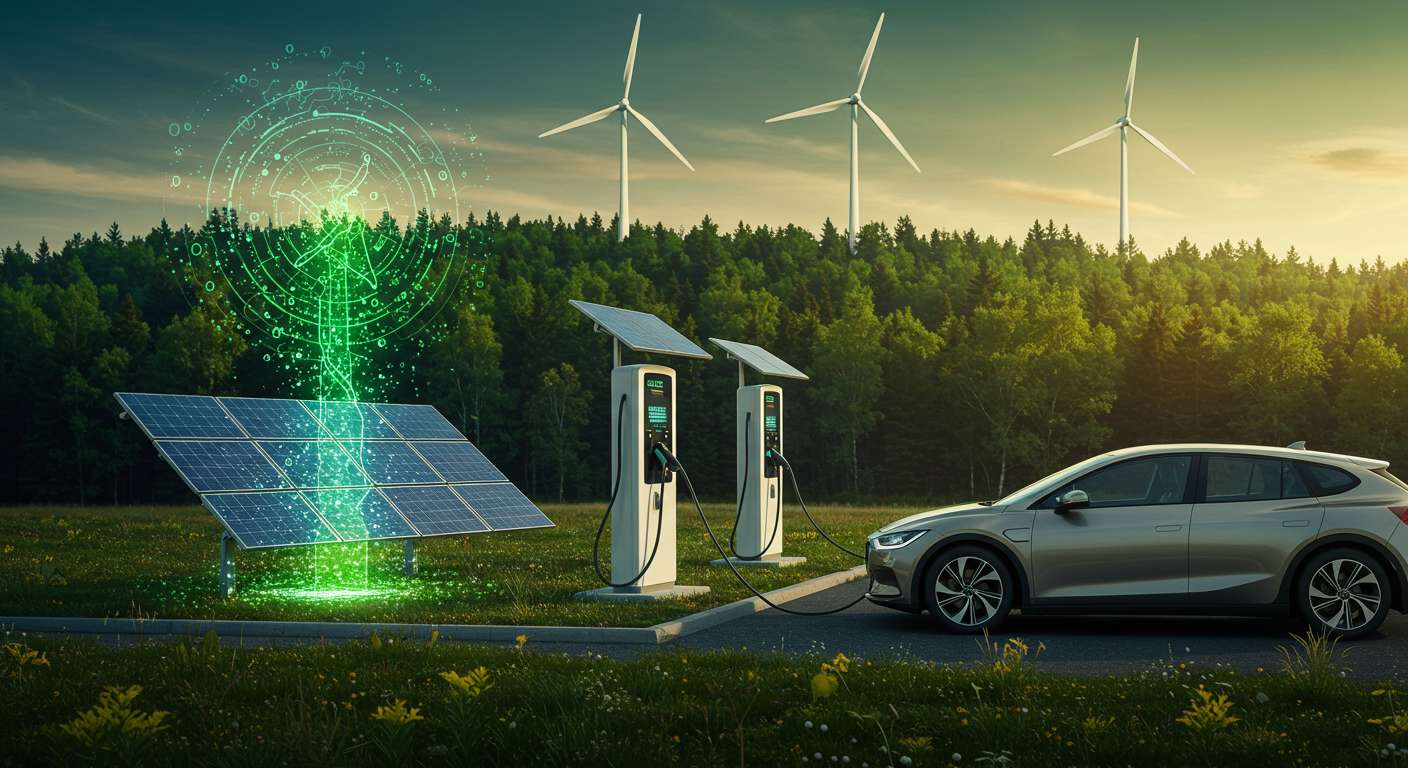- Introduction
- Smart Energy Solutions
- Clean Transportation Innovations
- Sustainable Agriculture Tech
- Green Building and Smart Cities
- Conclusion
- FAQs
Introduction
Green tech, or green technology, represents a revolutionary shift in how industries address environmental sustainability while maintaining efficiency. As the effects of climate change intensify and demand for clean energy rises, green tech has emerged as a vital component in shaping a sustainable future.
In this article, we will examine five key areas driving innovation in green technology:
First, we’ll discuss Smart Energy Solutions, including solar integration and smart grids. Next, we’ll explore Clean Transportation Innovations such as electric vehicles (EVs) and hydrogen fuel technology. Then, we’ll move into the realm of Sustainable Agriculture Tech with precision farming and vertical gardening solutions. Afterwards, we’ll take a deep dive into Green Building and Smart Cities focusing on eco-conscious construction, energy optimization, and AI integration. Finally, we’ll conclude with a summary and provide answers to some frequently asked questions.
Smart Energy Solutions
Smart energy solutions are transforming how we generate, store, and consume electricity. Central to this transformation is the integration of solar power systems which convert sunlight directly into electricity via photovoltaic (PV) panels. Thanks to improvements in PV cells, today's solar panels are not only more efficient but also more compact and cost-effective.
Alongside generation, energy storage systems like lithium-ion batteries enable consumers and businesses to store excess energy generated during peak sun hours for later use. This feature enhances grid independence and supports decentralization of energy resources.
At the system-wide level, smart grids introduce automation and digital communication to electricity distribution networks. These systems monitor energy flows in real-time and adapt supply based on consumption patterns. With Internet-of-Things (IoT) sensors, the grid can autonomously redistribute energy to avoid outages, reduce transmission losses, and integrate various green power sources seamlessly.
Clean Transportation Innovations
The transportation sector is historically one of the largest contributors to greenhouse gas emissions. However, recent advances have given rise to various clean transportation alternatives. The most notable of these are electric vehicles (EVs), which eliminate tailpipe emissions and drastically reduce dependency on fossil fuels.
Innovation in battery technologies, such as solid-state batteries, now offers longer range, better performance, and faster charging times. Additionally, public and private infrastructure is rapidly adapting through the rollout of EV charging stations globally, making adoption easier for consumers.
Another emerging player is hydrogen fuel cell technology. Unlike conventional batteries, hydrogen-powered vehicles generate electricity by converting stored hydrogen gas into usable energy, emitting only water vapor. These clean propulsion systems are expected to power long-haul transport and commercial logistics fleets where energy density and quick refueling are critical.
Sustainable Agriculture Tech
Agriculture accounts for significant CO₂ emissions and water usage. To address these challenges, precision farming is taking center stage. Using a combination of GPS, sensors, big data analytics, and drones, farmers can monitor soil health, crop growth, and even detect diseases with pinpoint accuracy. This reduces overuse of water, fertilizers, and pesticides, making operations more efficient and environmentally friendly.
Additionally, vertical farming and hydroponic systems are reimagining food production in urban environments. These systems allow plants to grow indoors in stacked layers using minimal water and space while leveraging artificial lighting. Controlled environment agriculture ensures year-round farming with high yield and fewer environmental dependencies.
Smart irrigation systems further optimize water usage by integrating weather forecasts, soil moisture sensors, and real-time analytics to deliver just enough water when needed. These innovations not only conserve water but also improve crop yield and quality.
Green Building and Smart Cities
Sustainable construction is central to reducing the built environment's ecological impact. Green buildings incorporate materials that are recycled, locally sourced, and energy-efficient. Features such as natural ventilation systems, passive solar heating, and low-emissivity glass help minimize energy requirements.
Moreover, urban planning is evolving with the rise of smart cities. These are metropolises designed with sustainability, technology, and livability in mind. Smart cities utilize AI algorithms to manage traffic flow, optimize waste collection routes, monitor air quality, and promote energy-efficient public transit networks.
Smart energy grids also play a crucial role in powering green buildings. Integrating renewable sources with AI-driven consumption monitoring allows cities to reduce energy waste and carbon footprints while creating healthier living conditions for residents.
Conclusion
Green technology is no longer a niche concept; it’s a global necessity. From smart energy and clean transportation to precision agriculture and intelligent urban design, technological innovations are meeting the urgent need for sustainable development. These advancements offer realistic solutions to mitigate the environmental impact of human activity, and investing in them is crucial for both the planet's and our society’s future.
As we continue to witness rapid advancements, participation from governments, industries, and individuals will be essential in adopting and scaling these green technologies. Turning concepts into actionable systems will depend on policies, education, and continued technological investment.
FAQs
What is Green Tech?
Green Tech, or green technology, refers to environmentally-friendly innovations involving clean energy, sustainable materials, and systems that reduce environmental impact and resource depletion.
How do smart grids benefit the environment?
Smart grids improve energy efficiency by distributing electricity according to real-time demand and sourcing more power from renewables, which decreases reliance on fossil fuels and reduces greenhouse emissions.
Are electric vehicles really sustainable?
Yes. While there are concerns about battery production, electric vehicles produce zero tailpipe emissions and can be charged using renewable electricity, making them much cleaner than fossil-fuel-powered cars overall.
What is vertical farming?
Vertical farming is the practice of growing crops in vertically stacked layers, often indoors, using minimal land and water while maximizing output through environmental controls.
What makes a building "green"?
A green building uses eco-friendly materials, incorporates energy-saving technologies, reduces water usage, and improves indoor air quality to minimize its environmental impact.

